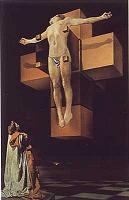Types of Ambiguity
1. Oscar: military phonetic for the letter ‘O’
2. “… this symbol among the Greeks was more circle than dot, but among those in India, more dot than circle.”
– Robert Kaplan, The Nothing That Is:
A Natural History of Zero
3. A bindi is an auspicious mark worn by young girls and women. Bindi is derived from bindu,
bindi is an auspicious mark worn by young girls and women. Bindi is derived from bindu,
the Sanskrit word for dot. It is usually a red dot made with
vermilion powder which is worn by women between their eyebrows on their
forehead. Considered a symbol of Goddess Parvati, a bindi
signifies female energy….
– Indian Customs & Traditions
4. Sometimes I feel so reckless and wild
Sometimes I feel like a motherless child
I gave nobody life, I am nobody’s wife
And I seem to be nobody’s daughter
So red is the color that I like the best
It’s your Indian skin and the badge
On my chest
The heat of my pride
The lips of a bride
The sad heart of the truth
And the flag of youth
And blood that is thicker than water
– Shawn Colvin of Vermillion, SD,
“The Story” lyrics
5. Hamlet Do you think I meant country matters?
Ophelia I think nothing, my lord.
Hamlet That’s a fair thought to lie between maid’s legs.
Ophelia What is, my lord?
Hamlet Nothing.
6. Macbeth ”…. a tale
Told by an idiot, full of sound and fury,
Signifying nothing.”
7. Enter a Messenger.










Recent Comments